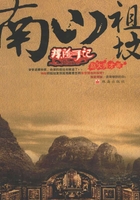Its articles provided: No ground rent, tithe, tax or toll to be paid to the princes, the nobility or the clergy; serfdom to be abolished; monasteries and other church estates to be confiscated and divided among the people, and no other authority to be recognised aside from the emperor.
We find here for the first time expressed among the peasants the two demands of secularising the church estates in favour of the people and of a unified and undivided German monarchy-demands which henceforth will be found regularly in the more advanced faction of the peasants and plebeians.
In Thomas Muenzer's programme, the division of the church estates was transformed into confiscation in favour of common property, and the unified German empire , into the unified and undivided republic.
The renewed Union Shoe had, as well as the old, its own secret meeting places, its oath of silence, its initiation ceremonies, and its union banner with the legend, "Nothing but God's justice." The plan of action was similar to that of the Alsatian Union.Bruchsal, where the majority of the population belonged to the Union, was to be overpowered.A union army was to be organised and dispatched into the surrounding principalities as moving points of concentration.
The plan was betrayed by a clergyman to whom one of the conspirators revealed it in the confessional.The governments immediately resorted to counter action.How widespread the Union had become, is apparent from the terror which seized the various imperial estates in Alsace and in the Union of Suabia.Troops were concentrated, and mass arrests were made.Emperor Maximilian, "the last of the knights," issued the most bloodthirsty, punitive decree against the undertaking of the peasants.Hordes of peasants assembled here and there, and armed resistance was offered, but the isolated peasant troops could not hold ground for a long time.Some of the conspirators were executed and many fled, but the secrecy was so well preserved that the majority, and also the leaders, could remain unmolested in their own localities or in the countries of the neighbouring masters.
After this new defeat, there followed a prolonged period of apparent quiet in the class struggles.The work, however, was continued in an underground way.Already, in the first years of the Sixteenth Century, Poor Konrad was formed in Suabia, apparently in connection with the scattered members of the Union Shoe.In the Black Forest, the Union Shoe continued in isolated circles until, ten years later, an energetic peasant leader succeeded in uniting the various threads and combining them into a great conspiracy.
Both conspiracies became public, one shortly after the other, in the restless years from 1513 to 1515, in which the Swiss, Hungarian and Slovenian peasants made a series of significant insurrections.
The man who restored the Upper Rhenish Union Shoe was Joss Fritz of Untergrombach, a fugitive from the conspiracy of 1502, a former soldier, in all respects an outstanding figure.After his flight, he had kept himself in various localities between the Lake Constance and the Black Forest, and finally settled as a vassal near Freiburg in Breisgau, where he even became a forester.Interesting details as to the manner in which he reorganised the Union from this point of vantage and as to the skill with which he managed to attract people of different character, are contained in the investigations.It was due to the diplomatic talent and the untiring endurance of this model conspirator that a considerable number of people of the most divergent classes became involved in the Union: knights, priests, burghers, plebeians and peasants, and it is almost certain that he organised several grades of the conspiracy, one more or less sharply divided from the other.
All serviceable elements were utilised with the greatest circumspection and skill.Outside of the initiated emissaries who wandered over the country in various disguises, the vagrants and beggars were used for subordinate missions.Joss stood in direct communication with the beggar kings, and through them be held in his hand the numerous vagabond population.In fact, the beggar kings played a considerable role in his conspiracy.Very original figures they were, these beggar kings.One roamed the country with a girl using her seemingly wounded feet as a pretext for begging; he wore more than eight insignia on his hat -- the fourteen deliverers, St.Ottilie, Our Mother in Heaven, etc.; besides, he wore a long red beard, and carried a big knotty stick with a dagger and pike.Another, begging in the name of St.Velten, offered spices and worm-seeds; he wore a long iron-coloured coat, a red barret, with the Baby of Trient attached thereto, a sword at his side, and many knives and a dagger on his girdle.Others had artificial open wounds, besides similar picturesque attire.There were at least ten of them, and for the price of two thousand guilders they were supposed to set fire simultaneously in Alsace, in the Margraviate of Baden, and in Breisgau, and to put themselves, with at least 2,000 men of their own, under the command of Georg Schneider, the former Captain of the Lansquenets, on the day of the Zabern Parish Fair in Rozen, in order to conquer the city.A courier service from station to station was established between real members of the union.Joss Fritz and his chief emissary, Stoffel of Freiburg, continually riding from place to place, reviewed the armies of the neophytes at night.There is ample material in the documents of the court investigations relative to the spread of the Union in the Upper Rhine and Black Forest regions.The documents contain many names of members from the various localities in that region, together with descriptions of persons.
Most of those mentioned were journeymen, peasants and innkeepers, a few nobles, priests (like that of Lehen himself), and unemployed Lansquenets.















